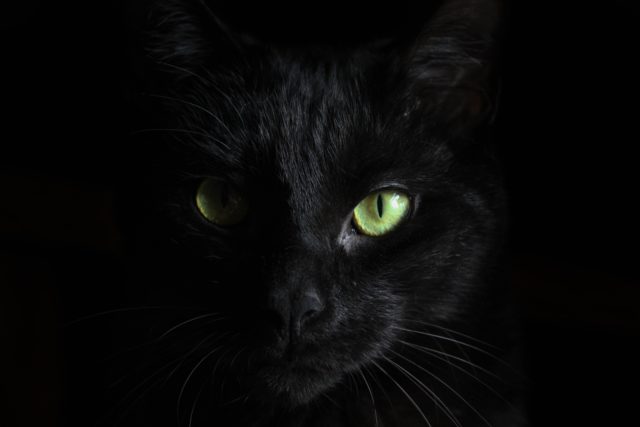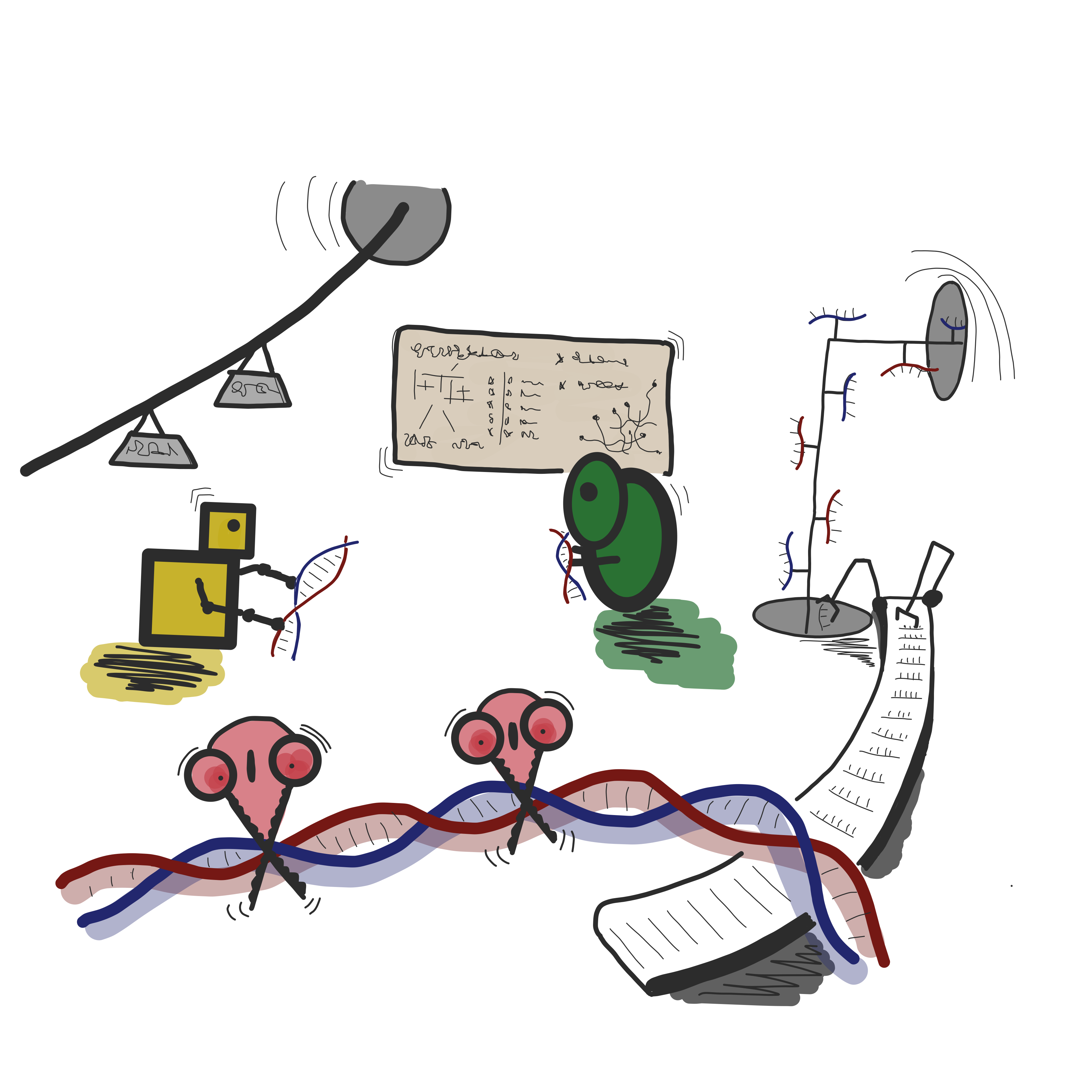Is the black cat crossing your path more superstitious than you?

There are many types of “superstitions”: from avoiding walking under ladders, knocking on wood for good luck to making wishes on a turkey wish-bone 1. So, is there any point to these strange behaviours? Well, it turns out that researchers have found that superstitions do have a purpose2. Believing that doing or not doing an action to achieve an outcome turns out not to be limited to human behaviour3.
A superstition is defined as “a belief or way of behaving that is based on fear of the unknown and faith in magic or luck: a belief that certain events or things will bring good or bad luck”4. There is no sense for intelligent beings to believe that a ‘superstition’ can influence the future when they objectively can’t5.
Surprisingly, superstitious behaviour has been noted in many animals, not just humans67. Examples of superstitions are wearing your lucky socks for exam day or avoiding going out on Friday the 13th. Performing a behaviour to get a certain result or avoiding something is costly to both humans and animals in terms of energy but also lost opportunities and time8.
Therefore, how has evolution created or even facilitated such senseless behaviour? A study conducted by Abbott and Sherratt published in Animal Behaviour9 suggests a variety of reasons for this curious occurrence; superstitious behaviour is now maladaptive but was once an adaptive behaviour in the ancestral environment. This type of behaviour may be the outcome of ancient behaviour traits that are no longer appropriate for the modern environment10
Superstitions in animals was first reported in 1948 by psychologist B.F. Skinner1112. In his study, half-starved pigeons were placed in cages and food trays were presented to them for a few seconds repeatedly. After a while, the pigeons started to behave strangely – for example spinning counter-clockwise, rocking from side to side or tossing their heads up as if they were lifting the food dispenser lever.
The birds seemed to believe that their behaviours were somehow connected with the release of food, which of course was not the case. The food dispensers were automatically programmed to release food at random intervals13. The birds continued with this behaviour even as the periods between feeding lengthened. Skinner concluded that the birds were trying to learn to produce the food on their own14.
A study by psychologist Peter R. Killen in 1978 added to Skinner’s work on superstitious behaviour in pigeons by changing the design to allow the pigeons to detect whether or not a result was due to their actions or simply random15. Killeen found that the birds were able to distinguish slight differences and their performance was similar to humans who were also asked to make the same discriminations. When the birds were given all the information they needed, they could effectively decide cause and effect. This study concluded that insufficient data or “prior beliefs” could misguide the birds into “making the wrong conclusions”16.
Superstitious behaviour is highly resilient to extinction17. In Skinner’s study, some of the pigeons were found to exhibit the same behaviour approximately 10,000 times without any reinforcement. Performing a behaviour expecting a reward, but receiving none, increases persistence. This resonates well with us humans and other animals, as we believe that if we continue for long enough, we will eventually get the result we want18.
Adapting to your environment is an important part of survival for both animals and humans. Making correct associations between events is an important part of learning to adapt to the environment. From an evolutionary perspective, getting just one association right outweighs the costs of making many wrong associations. Natural selection favours individuals that learn to make associations rather than those who do not — this is why superstitious behaviour is highly resilient to extinction19.
The aforementioned study by Abbott and Sherratt goes much further than previous research on superstition. They designed a statistical model which incorporated choice and experience. The idea of the model was based on a ‘two-armed bandit’ situation. An example of a one-armed bandit situation is a slot machine—you pay to play and take the chance because you believe you might win, and the potential reward is large2021. When you are playing against a two-armed bandit, you can either decide to go with a safe option (that maximizes the likelihood of winning this round) or you can choose to go with the more risky choice (and explore the situation). This model also holds true to situations that animals may face in the wild they may explore the situation or stay with an action that they have previously learnt that best solves the situation2223.
Included in this model is the ability to run multiple trials and to learn from them; thus the subject in this model is not basing a decision on a single event. The model shows that what happens in the last 10 or more trials has an impact. In fact, the results show that an old superstition will be dropped if it is too ‘expensive’ to keep up — the model predicts what we tend to see in real-life situations2425.
This model tested the strength of superstitions and how they remain resilient when faced with contradictory evidence. A common superstition is carrying a lucky charm. The more you carry it with you and don’t receive your dream grade, the more you will start to doubt its effectiveness. However, if you are achieving your dream grade and have many positive experiences whilst carrying this lucky charm you might start beginning to believe it works2627.
Research on superstitious behaviour is important in understanding adaptive learning mechanisms in both humans and animals. Not having enough information about a situation is a big contributor to causing superstitions to develop. Learning to make the right associations is key in helping you to adapt to your environment and having superstitious behaviour has helped humans and non-humans evolve and learn to adapt to their environment.
So, next time you hold that lucky charm, knock on that piece of wood or fearfully observe the black cat; remember that superstitions have helped our ancient ancestors to adapt to the environment and play an important part in survival – even in pigeons.

This article was specialist edited by Anna Henschel and copy-edited by Miriam Payne.
References
- https://www.livescience.com/14141-13-common-silly-superstitions.html
- https://www.sciencedirect.com/science/article/pii/S0003347211001448
- https://www.livescience.com/14504-superstitions-evolutionary-basis-lucky-charms.html
- https://www.merriam-webster.com/dictionary/superstition
- https://www.livescience.com/14504-superstitions-evolutionary-basis-lucky-charms.html
- https://www.livescience.com/14504-superstitions-evolutionary-basis-lucky-charms.html
- https://ethology.eu/superstitious-behavior-in-animal-training/
- https://www.livescience.com/14504-superstitions-evolutionary-basis-lucky-charms.html
- https://www.sciencedirect.com/science/article/pii/S0003347211001448
- https://www.sciencedirect.com/science/article/pii/S0003347211001448
- https://www.sciencedirect.com/science/article/pii/S0003347211001448
- https://www.livescience.com/14504-superstitions-evolutionary-basis-lucky-charms.html
- https://www.livescience.com/14504-superstitions-evolutionary-basis-lucky-charms.html
- https://ethology.eu/superstitious-behavior-in-animal-training/
- https://www.researchgate.net/profile/Peter_Killeen2/publication/6268665_Superstition_A_Matter_of_Bias_Not_Detectability/links/0046351df35c933f42000000.pdf
- https://www.researchgate.net/profile/Peter_Killeen2/publication/6268665_Superstition_A_Matter_of_Bias_Not_Detectability/links/0046351df35c933f42000000.pdf
- https://ethology.eu/superstitious-behavior-in-animal-training/
- https://ethology.eu/superstitious-behavior-in-animal-training/
- https://ethology.eu/superstitious-behavior-in-animal-training/
- https://www.sciencedirect.com/science/article/pii/S0003347211001448
- https://www.livescience.com/14504-superstitions-evolutionary-basis-lucky-charms.html
- https://www.sciencedirect.com/science/article/pii/S0003347211001448
- https://www.livescience.com/14504-superstitions-evolutionary-basis-lucky-charms.html
- https://www.sciencedirect.com/science/article/pii/S0003347211001448
- https://www.livescience.com/14504-superstitions-evolutionary-basis-lucky-charms.html
- https://www.sciencedirect.com/science/article/pii/S0003347211001448
- https://www.livescience.com/14504-superstitions-evolutionary-basis-lucky-charms.html










